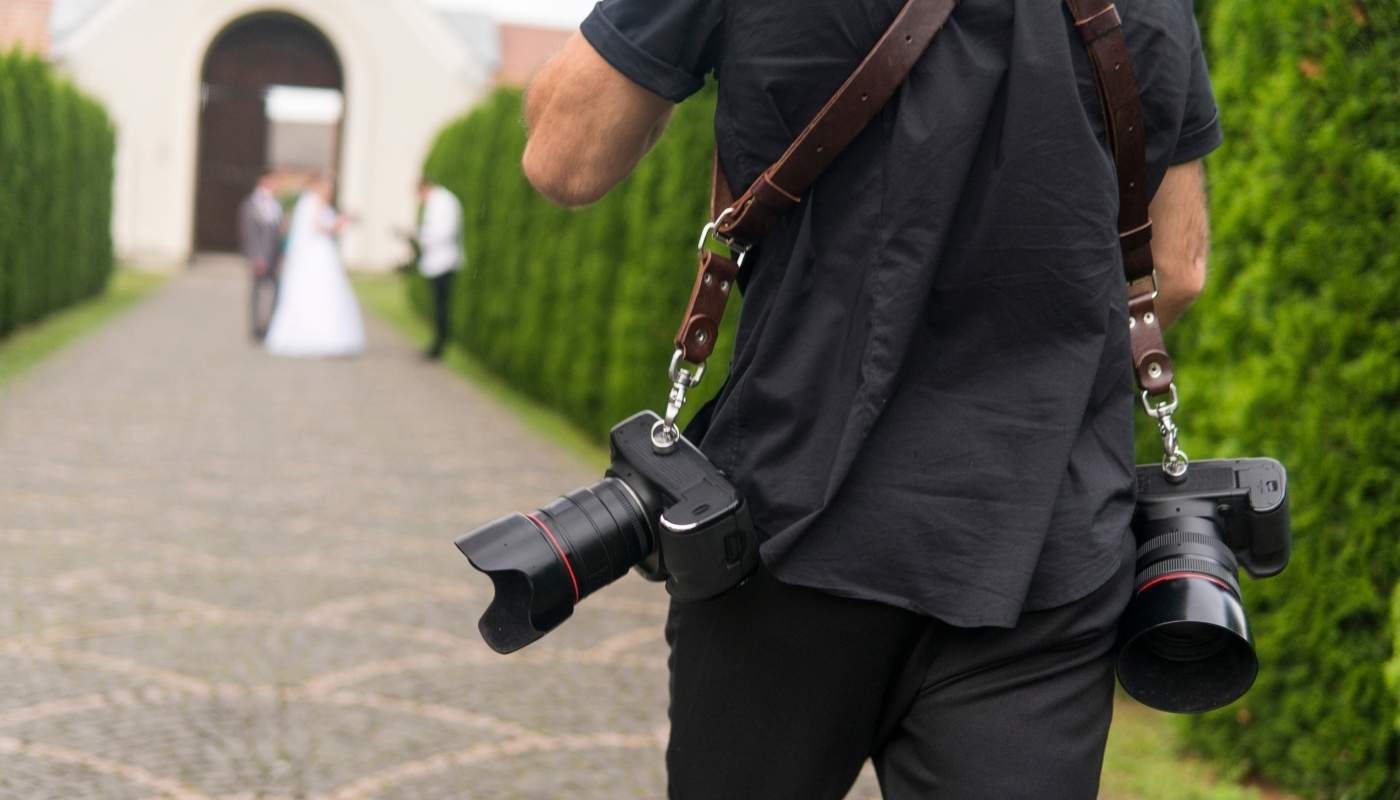How Long Should a Houston Wedding Photographer Stay?

Strong 8k brings an ultra-HD IPTV experience to your living room and your pocket.
When you book a Houston wedding photographer, one of the most common questions is: “How long will they stay at the venue?” The answer isn't fixed—it depends on what moments you want captured, your event timeline, and the coverage package you select. This comprehensive guide will help you understand typical timeframes, real-world case studies, and how to choose the right amount of coverage for your special day.
Understanding Typical Coverage Durations
Photographers often offer a range of packages based on coverage length. Here’s what each usually covers:
Short Coverage (4–6 hours)
Ideal for elopements, intimate ceremonies, or micro-weddings. Usually begins with bridal prep, captures the ceremony, and continues into the early reception or grand exit.
Standard Coverage (8–10 hours)
The most common, this gives full-day storytelling: bridal and groom prep, first look, ceremony, family portraits, reception events (entrance, toasts, cake cutting, and first dance), and some candid dancing time.
Extended or Full-Day Coverage (10–14 hours)
Perfect for large weddings with multiple events like rehearsal dinner, ceremony, reception, and possible after-party. This ensures you’ve got every moment, from getting ready to late-night fun.
What Influences How Long a Photographer Will Stay?
Several key factors determine how much time you'll need from your photographer:
Wedding Day Timeline and Events
Multiple activities (first look, cocktail hour, choreographed dances, speeches, sunset portraits) naturally extend required coverage.
Number and Location of Venues
A ceremony and reception at different venues, or having prep at separate locations, means factoring in travel time.
Second Shooter or Assistant
Having a second photographer helps cover both sides of the prep, candid guests, and simultaneous events—boosting coverage efficiency.
Photography Style and Approach
A detail-oriented photographer may invest additional time in styling shots, finding optimal lighting, and allowing spontaneous moments to unfold. This ensures high-performance quality and artistry, but takes longer.
Overtime and Flexibility
Many couples end late-night dance parties. Being able to add overtime coverage means you won't miss out on any creative or fun moments.
Sample Full-Day Timeline (10–12 Hours)
Here’s how a photographer might structure a full-day coverage schedule for a large wedding:
- 7:00 AM – 8:00 AM: Arrival at bridal prep location to photograph details (dress, shoes, invitations, flowers).
- 8:00 AM – 9:30 AM: Bride and bridesmaids' preparation—hair, makeup, candid moments.
- 9:30 AM – 10:00 AM: Groom and groomsmen prep, including finishing touches.
- 10:00 AM – 10:30 AM: First look with the couple—romantic portraits and emotional connections.
- 10:30 AM – 11:15 AM: Couple portraits around venue; private moments.
- 11:15 AM – 12:00 PM: Family and wedding party group photos.
- 12:00 PM – 12:30 PM: Final touch-ups for guests, venue prep.
- 12:30 PM – 1:15 PM: Ceremony coverage—arrival, vows, ring exchange, ceremony exit.
- 1:15 PM – 2:00 PM: Formal family shots and bridal party photos post-ceremony.
- 2:00 PM – 3:00 PM: Cocktail hour—candids, venue ambiance, guest interactions.
- 3:00 PM – 3:30 PM: Travel break to reception space (if separate venue).
- 3:30 PM – 4:00 PM: Reception entrance, speeches, toasts.
- 4:00 PM – 5:00 PM: Dinner and candid guest interactions.
- 5:00 PM – 5:30 PM: Cake cutting, bouquet and garter toss.
- 5:30 PM – 6:00 PM: First dance, parent dances.
- 6:00 PM – 7:00 PM (or later): Reception party and evening fun. Usually extend coverage into late-night dancing or sparkler exits if desired.
Real-World Perspective: Case Study in Houston
Meet the Rodriguezes
- Guest count: ~200
- Ceremony on a church lawn at 1:00 PM, reception at loft venue nearby
- Optional “first look” scheduled
Coverage Plan: 9 Hours (7:30 AM–4:30 PM)
- 7:30–8:00 AM: Photographer arrives, captures stationery, shoes, rings, personal notes.
- 8:00–9:30 AM: Bride’s prep—hair, makeup, bridal party moments.
- 8:00–9:00 AM: Groom’s prep at the loft space, captured simultaneously.
- 9:30–10:00 AM: First look in the church courtyard.
- 10:00–11:00 AM: Bride and groom portraits with light background.
- 11:00–11:45 AM: Family photos at the church.
- 11:45 AM–12:45 PM: Guests arrive, evoloving ambiance.
- 12:45–1:30 PM: Ceremony coverage.
- 1:30–2:15 PM: Cocktail hour—guests mingling, candid shots, decor.
- 2:15–2:45 PM: Travel and setting up in reception loft.
- 2:45–3:30 PM: Reception entrance, toasts, immediate setup.
- 3:30–4:30 PM: Dinner, parent dances, cake cutting.
Result:
The Rodriguezes received ~950 edited photos that included emotional prep snapshots, a romantic first look, vivid ceremony moments, warm reception toasts, and emotional dances—all within nine hours.
Why More Coverage Often Means Higher Value
- Confidence and Calm: With full-day coverage, you’ll feel at ease that no moment is missed.
- Variety of Moments: More time equals a broader range of shots—emotional portraits, detail images, guest candids, and party energy.
- Creative Flexibility: Photographers can suggest creative setups, explore different lighting scenarios, and seize spontaneous emotions.
- High-Quality Experience: Just like choosing any top-rated, well-experienced professional, more coverage translates into a more refined, scalable, and memorable final gallery.
Tips for Choosing the Right Coverage
1. Identify Your Must-Have Moments
Would you regret missing prep shots, the first look, family portraits, or the last dance? That helps shape your ideal coverage length.
2. Build a Realistic Timeline
Include setup, travel, and buffer times—start early and end late if you value full documentation.
3. Use a Second Shooter
If you’re having a bridal prep in one location and groom prep in another, a second shooter ensures both sides are equally captured.
4. Evaluate Package Structure
Look for inclusive sets that provide overtime, digital galleries, second shooters, and high-resolution images—all part of affordable, proven, and user-friendly offerings.
5. Communicate with Your Photographer
They often have experience with venue layouts, light timing (especially around sunset), and can help refine your coverage plan.
Additional Coverage Opportunities
- Engagement Shoot
Helps you get comfortable in front of the camera and builds rapport.
- Rehearsal Dinner Coverage
This relaxed gathering is great for candid family and friend moments.
- Trash-the-Dress Session
A fun, creative, often late-night shoot; can be included in extended packages or taken separately.
Post-Wedding Portrait Session
Allows for additional portraits at a scenic location, lower stress, and more time.
Common Questions Answered
Can I just book a photographer for the ceremony only?
Yes. Many couples do intimate ceremonies or registry weddings with 3–4 hour coverage—it’s perfect if you’re fine skipping prep or party shots.
How early should the photographer arrive?
Typically 30–45 minutes before the start time to capture details, prep setup, and ensure smooth transitions.
Are brief breaks okay?
Absolutely. Most photographers take short breaks for meals, setup, or rest—but they plan them around important moments so nothing gets missed.
What if the timeline changes?
Good photographers remain flexible and adjust as needed. Avoid being overly rigid—but if something important shifts, let them know promptly.
Hourly or package-based billing?
Most professionals work with fixed packages that include specific durations; overtime is usually billed hourly. Ask for clarity up front.
Summary
Wedding photography isn’t just about clicking a button—it’s about capturing emotion, love, and story from start to finish. The usual sweet spot for coverage is 8–10 hours, which allows for a complete narrative: prep, ceremony, portraits, and reception energy. For smaller events, 4–6 hours may work beautifully; but if your day is rich with moments, events, and creative ideas, 10–14 hours (often with a second shooter) ensures every highlight shines through.
Begin by defining what moments truly matter, build a realistic timeline including buffer times, and choose packages from trusted, industry-leading, and cutting-edge Houston wedding photographer. With the right coverage, you'll relive your day through stunning, reliable photos capturing both hearts and details forever.
Note: IndiBlogHub features both user-submitted and editorial content. We do not verify third-party contributions. Read our Disclaimer and Privacy Policyfor details.


